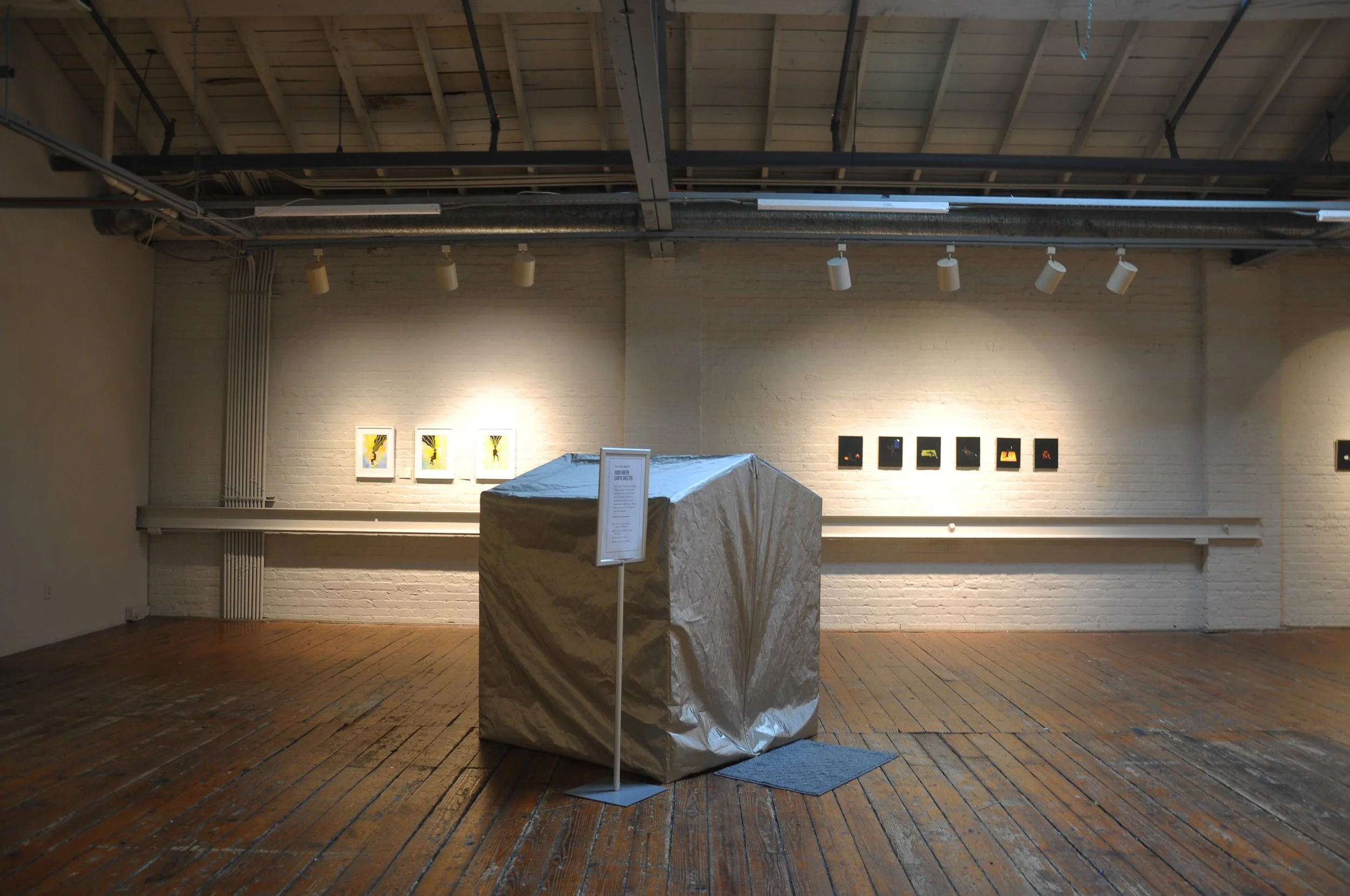Interview: Louisa Armbrust
Louisa Armbrust creates paintings, drawings, and installations that reveal the contradictions of daily life, particularly those shaped by the pervasive influence of technology. Her work focuses on moments of interaction between people and digital tools, addressing themes of autonomy, consumption, and privacy. With a mix of humor, reflection, and sharp critique, she examines the gap between aspirations and actual experiences.
Born in Ottawa, Canada, and raised in Denver, Colorado, Armbrust now divides her time between Brooklyn and Ghent, NY. She has been recognized with residencies and awards, including the Millay Colony for the Arts, LMCC Swing Space, a New Works Project Grant from Harvestworks Digital Media Art Center, and a residency at the Vermont Studio Center. Her art has been featured in exhibitions at institutions such as the Children’s Museum of the Arts in New York, Gallery Aferro in Newark, the Newhouse Center for Contemporary Art in Staten Island, and the Museum of Contemporary Art in Denver. She holds an MA in Visual Arts from Goldsmiths College, University of London.
Read our interview with Louisa below!
The Good Green Earth Shelter, Artspace, Raleigh, 2023
PP: Walk us through a typical day in your studio or generally through your process to make new work.
LA: My day starts with tea and reading, breakfast, a walk and a shower. I can’t leave any of those things out or everything just falls apart. Currently my studio work is divided between drawing and painting on the one hand and installation work where I have to do a lot of materials and structural testing.
I try to also have “just do it” work in process, where if I feel stuck in an area I’m working on and I’m not finding the “thing” that makes it move forward, I can pick up the “just do it” work and get that sense of accomplishment and progress anyway. Right now, I’m working on a latchhook project that works this way for me.
Of course there is also always work to be done on the administrative side, documenting work, maintaining connections, and applying for opportunities. So my studio time is really divided between the actual creating time and admin tasks.
In the Dark After Géricault 10, Watercolor crayon and sumi ink on panel, 10 x 8 inches, 2022
In the Dark After Géricault 7, Watercolor crayon and sumi ink on panel, 10 x 8 inches, 2022
PP: What motivates you to make art?
LA: I am motivated, or maybe it’s better to say provoked, to make art, by the gap between real life and the words, stories, and rules that are spun up to try to influence our lives. The biggest influence these days is our ever present connection to the internet. The forces of capitalism are constantly trying to manipulate me, you and everyone we know to extract profit. I am motivated to make work that illuminates the holes in this system.
I also feel a lot of motivation from seeing other art. When work interests me, through its logic, intricacy or presence, it instantly convinces me of its right to exist. It’s a right that transcends market forces. I couldn’t care less whether that work or that artist can “sell” that work, the work asserts itself and absorbs my attention creating a mini-break from non-stop consumption and productivity. It reminds me that there is more to being human than surviving, achieving health insurance and self-optimizing to be an earning machine. Art recenters me in a more alive space where I want to contribute to that same energy of reprieve.
PP: What is your favorite medium and why?
LA: Whatever I’m working on at the time, because if I’m learning from a new material, it’ll surprise me and take me in directions I hadn’t anticipated.
Studio View
PP: What role do you think artists have in society today? What role should they have?
LA: I think artists are experimenters at the cutting edge of thought and possibility. They have that role today, but it’s not well supported in a culture like ours. The best work involves some degree of play and risk, and market conditions can be water on the fire of speculative thought.
PP: Name a childhood toy (or memory/cultural reference) you had, that you think relates to your practice today.
LA: When I was 9 years old I moved from Canada to the US and experienced how two cultures that appear in many ways to be very similar can actually also be quite different. I think it sensitized me to the presence of unspoken as well as spoken rules.
To learn more about Louisa’s work, see her Instagram and Website




